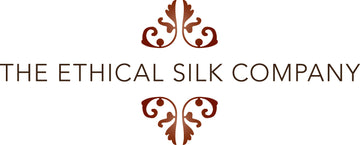The History Of Silk II: The Silk Road And Spread To Europe
A few months ago, we gave you a little insight into the extensive and exciting history of silk. In our previous blog post, we discussed silks early dominance within Chinese culture and how it spread to nations such as Japan and Korea. So today, we reveal the second part, which includes details of the infamous Silk Road, how the materials spread to Europe and how it’s helped to shape the world we know today.

With the secret of sericulture finally revealed, silk production inevitably spread westward. Even since Roman times, silk was a highly sought after material by Europeans, but reproducing it proved unsuccessful. Around the 6th Century however, the Persians mastered this production method. This was followed closely by the Byzantine Empire, who forged their own monopoly on the materials manufacture thanks to two Nestorian Monks.
Furthermore, silk also spread rapidly through Africa, when the Arabs conquered much of the Persian Empire during the 7th Century. Their vast sericulture production techniques were adopted quickly, resulting in its spread to the continent, as well as Sicily and Spain. All of this trade extended the Silk Road to a mammoth 6,400km long stretch through Asia, the Middle East and on into Africa and Europe.
This trade route proved lucrative for many Venetian merchants during the 13th Century and eventually convinced many Chinese and other Asian/Middle Eastern silk manufacturers to settle in Italy in order to provide a steady flow of silk for the Italian mass market. This eventually led to Italian dominance in silk production throughout the region. Even today, this silk is highly regarded, especially in the region of Como, where they have a Silk Museum dedicated to the illustrious history of the textile industry.

Marco Polo, Famous Venetian Merchant, travelling along the Silk Road
The strength of Italian silk in Europe remained dominant until the 17th Century, when King Francis I invited Italian producers to France in order to establish a French silk industry. It’s important to note that silk remained a luxury material throughout Europe during medieval times, being reserved mainly for aristocrats and royalty. As a result, both the French and long standing Italian silk industry jockeyed for dominance in the European continent. However, neither of them would remain assertive for long.
During the 19th Century, Japan emerged as the top silk manufacturing nation in the world as Europe’s production flat lined with the Industrial Revolution. Despite a halt during World War II, Japan reasserted its sericulture authority for decades, only for China to re-establish itself as the globes leading producer during the 1970’s.

Today, silk still plays an important role in many nations’ economies, especially China’s. In 2009, the Chinese market contributed almost 81.95% of the 126,995 metric tones of silk produced that year. Additionally, India, Japan and Korea continue to supply large amounts to the global market. Our own ethically produced silk originates in India, while it’s tailored in the Himalayas. Find out more about the Ethical Silk Company and our products here, or why not check us out on Facebook, Twitter or Pinterest.
Thanks,
Eva

